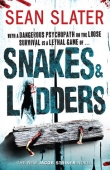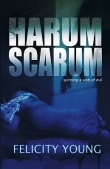
Текст книги "Defending Jacob"
Автор книги: William Landay
Соавторы: William Landay
Жанр:
Криминальные детективы
сообщить о нарушении
Текущая страница: 21 (всего у книги 25 страниц)
32
The Absence of Evidence
Trial day five.
At the stroke of nine, Judge French stormed the bench and announced in a clenched way that the defendant’s motion for mistrial was denied. He said-as the stenographer repeated his words into a cone-shaped microphone which she held over her face like an oxygen mask-“Defendant’s objection to the mention of the defendant’s grandfather is noted for the record and the issue is preserved for appeal. I have given the jury a curative instruction. I think that’s enough. The prosecutor is cautioned not to mention the issue any further, and that’s all we’re going to hear about it. Now, absent any other objections, Court Officer, bring in the jury and let’s get started.”
I can’t say I was surprised. Mistrials are rare. The judge was not going to flush away the state’s enormous investment in seeing this trial through to the end, not if he could help it. He might have been embarrassed by a mistrial too. It might look like he had lost control of his courtroom. Logiudice knew all this, of course. He may have crossed the line intentionally, betting that the high stakes in this case made a mistrial particularly unlikely. But that is unkind.
The trial swept on.
“What is your name, please?”
“Karen Rakowski. R-A-K-O-W-S-K-I.”
“What is your occupation and your current assignment?”
“I am a criminalist with the Massachusetts State Police. I’m currently assigned to the State Police Crime Lab.”
“What is a criminalist, exactly?”
“A criminalist is someone who applies the principles of the natural and physical sciences to identify, preserve, and analyze evidence at a crime scene. She later testifies to her findings in a court of law.”
“How long have you been a criminalist with the state police?”
“Eleven years.”
“Approximately how many crime scenes would you say you’ve investigated over the course of your career?”
“Approximately five hundred.”
“Are you a member of any professional organizations?”
Rakowski proceeded to rattle off the names of a half dozen organizations, then her degrees and a teaching position and a few publications, all of which went swiftly by like a freight train: difficult to distinguish in detail but impressive in its length. The truth was, no one listened to Rakowski’s information dump because no one really questioned her qualifications. She was well known and respected. It should be pointed out that the job of “criminalist” has become a lot more professional and rigorous than it was when I started out. It has even become fashionable. Forensic science has become a lot more complex, particularly with respect to DNA evidence. No doubt the job has been glamorized by shows like CSI too. Whatever the reason, the job attracts more and better candidates now, and Karen Rakowski was among the first wave of criminalists in our county who were not just cops moonlighting as amateur scientists. She was the real thing. It was a lot easier to picture her in a white lab coat than in the jodhpurs and jackboots of the state police. I was glad she had been assigned the case. I knew she would give us a fair shake.
“On April 12, 2007, at around ten A.M., did you get a phone call about a murder in Cold Spring Park in Newton?”
“Yes, I did.”
“What did you do in response?”
“I went to the location, where I was met by Lieutenant Duffy, who gave me a briefing about what he had at the crime scene and what he wanted me to do. He brought me to the location where the body was lying.”
“Had the body been moved, as far as you know?”
“I was told it had not been disturbed since the police arrived there.”
“Had the medical examiner arrived yet?”
“No.”
“Is it preferable for the criminalist to arrive before the medical examiner?”
“Yes. The M.E. can’t process the body without moving it. Once the body is moved, obviously you can’t draw any inferences from its position.”
“Now, in this case you knew that the body had already been moved by the jogger who discovered it.”
“I did.”
“Were you able to draw any conclusions from the position of the body and from the surrounding scene nonetheless, when you first saw it?”
“Yes. It was apparent that the attack had taken place at the top of the hill by a walking trail and that the body had slid down the hill afterward. That was evidenced by a trail of blood leading down the hillside to the final resting position of the body.”
“These are the contact smears of blood we heard about yesterday?”
“Yes. When I arrived, the body itself had been rolled over face up, and I could see that the victim’s T-shirt was soaked with what appeared to be wet blood.”
“What significance did you attach, if any, to the large amount of blood on the victim’s body?”
“At the time, none. Obviously, the wounds were significant and fatal, but I knew that before I arrived.”
“But doesn’t the large amount of blood at the scene suggest a bloody struggle?”
“Not necessarily. Blood circulates through our bodies constantly. It is a hydraulic system: it is being pumped around and around. It moves through the circulatory system, through the veins, under pressure. When a person is killed, the blood is no longer under the pressure of a pump and its movement is then controlled by the ordinary laws of physics. So a lot of the blood that was apparent at the scene, both on the victim himself and on the ground underneath and around him, might have simply drained out of him because of gravity, because of the way the body was lying: feet above head, facedown. So the blood on the body might have been postmortem bleeding. I could not tell yet.”
“Okay, so what did you do next?”
“I examined the scene more closely. I observed some blood spatters near the top of the hill, at what seemed to be the point of the attack. There were only a few spatters here.”
“Let me stop you there. Is there a discipline in the forensic sciences of blood spatter analysis?”
“Yes. It is the study of the patterns of blood spatters, which can yield useful information.”
“Were you able to get any useful information from the blood spatters in this case?”
“Yes. As I was saying, at the point of attack there were a few very small blood spatters, less than an inch in size, and it was apparent from their size that they had fallen more or less straight down to the ground, spattering evenly in all directions. That is called a low-velocity drop or sometimes ‘passive bleeding.’ ”
Logiudice: “Now, yesterday we heard some discussion by the defense about whether you could expect to find blood on the attacker’s body or on his clothes after an attack like this one. Based on your observations of the blood spatters, do you have an opinion about this?”
“Yes. It is not necessarily true that the attacker here would have blood on him. Going back to the circulatory system that pumps blood through the body: remember that once blood is ejected from the body out into the air, it is subject to the ordinary laws of physics just like anything else. Now, it’s true, if an artery is cut, depending where it is on the body, you would expect the blood to gush out. That’s called ‘arterial gushing.’ Same with a vein. But if it’s a capillary, you might see just dripping like this. I did not see any spatters at the scene that seemed to have been cast off with force. That sort of cast-off blood would land at an angle and spatter unevenly, like this.” She demonstrated by sliding her fist along the length of her forearm to show how the blood drop would spread across the surface at impact. “It is also possible that the assailant stood behind the victim when he stabbed him, which would put him out of the trajectory of any spraying blood. And of course it is possible the assailant changed his clothes after the attack. All of which is simply to say that you cannot automatically assume that the assailant in this case would be covered in blood after the attack despite the large amount of blood found at the scene.”
“Are you familiar with the saying ‘The absence of evidence is not evidence of absence’?”
“Objection. Leading.”
“He can have it. You can answer the question.”
“Yes.”
“What does that saying mean?”
“It means that, just because there is no physical evidence proving a person’s presence at a particular time and place, you cannot necessarily conclude that he was not actually there. It’s probably easier to understand if I put it this way: a person can be present at a crime and leave no physical evidence there.”
Rakowski’s testimony went on for some time. It was a critical part of Logiudice’s case and he took his time putting it in. She testified in detail that the blood found at the scene was all the victim’s. There was no physical evidence found in the immediate vicinity of the body that could be linked to any other person-no finger-, hand-, or shoe prints, no hairs or fibers, no blood or other organic material-with the single exception of that damn fingerprint.
“Where precisely was the fingerprint located?”
“The victim was wearing a zippered sweatshirt with the zipper open. On the inside of that sweatshirt, about here”-she indicated a spot on the inside of her own jacket, on the left side of the lining where an interior pocket is often located-“there was a plastic tag with the manufacturer’s name. The print was found on that tag.”
“Does the surface on which a fingerprint is found affect its value?”
“Well, some surfaces take a print better. This was a flat surface. It had been wetted with blood, almost like an inked pad, and it showed the fingerprint very clearly.”
“So this was a clean print?”
“Yes.”
“And after studying this fingerprint, whose print did you determine it was?”
“The defendant, Jacob Barber’s.”
Jonathan stood and said with a shrug in his voice, “We’ll stipulate it’s the defendant’s fingerprint.”
The judge said, “Without objection,” and he turned to the jury: “The meaning of a stipulation is that the defense concedes that a fact is true without the prosecutor having to prove it. Both parties agree to the truth of this fact, therefore you may take it as true and proven. Okay, Mr. Logiudice.”
“What significance, if any, did you assign to the fact that the fingerprint was in the victim’s own blood?”
“Obviously the blood had to be on that tag first in order for the defendant’s finger to be pressed into it. So the significance is that the fingerprint was put there after the attack had begun, or at least after the victim had been cut at least once, and soon enough after the attack that the blood on that tag was still wet, since dry blood would not have taken the print the same way, if at all. So that print was put there during or very soon after the attack.”
“How big a window are we talking about? How soon before the blood on that tag is too dry to take the fingerprint?”
“There are a lot of factors involved. But not more than fifteen minutes on the outside.”
“Even sooner, is it likely?”
“Impossible to say.”
Good girl, Karen. Don’t take the bait.
The only sparring took place when Logiudice tried to enter into evidence a knife, a sleek and wicked thing called a Spyderco Civilian, which was the knife Jacob specifically named in his story imagining the Rifkin murder. Jonathan vehemently objected to this knife being shown to the jury since there was no evidence that Jacob ever owned such a knife. I had dumped Jacob’s knife long before the cops searched his room, but I blanched at the sight of the Spyderco Civilian. It looked very similar to Jacob’s. I didn’t dare turn around to look at Laurie, so I can only report what she later told me: “I died when I saw it.” Judge French ultimately did not allow Logiudice to enter the knife in evidence. Its physical appearance, he said, was “inflammatory” given how weakly the government had linked the knife to Jacob. Which was Judge French’s way of saying he was not about to let Logiudice start waving a lethal-looking knife around the courtroom as a way to work the jury up into a lynch mob-not until the government offered a witness who could say Jacob had such a knife. But he would allow the expert to testify about the knife in general terms.
“Is that knife consistent with the victim’s wounds?”
“Yes. We examined the size and shape of the blade relative to the wounds and they were consistent. The blade on that particular knife is curved and has a serrated edge, which would account for the ragged tears at the edge of the wounds. It is a knife designed for slashing at an opponent, as you would in a knife fight. A knife intended to make a neat slice will typically have a smooth, very sharp edge, like a scalpel.”
“So the killer might have used exactly that sort of knife?”
“Objection.”
“Overruled.”
“He might have, yes.”
“Could you tell from the angle of the wounds and the design of the knife how the killer might have inflicted the fatal wounds, what sort of motion he might have used?”
“Based on the fact that the wounds enter the body essentially straight, that is, on a horizontal plane, it would seem that the assailant most likely stood directly in front of the victim, was of about equal height, and stabbed straight ahead in three thrusts holding his arm roughly level.”
“Would you demonstrate the motion you mean, please?”
“Objection.”
“Overruled.”
Rakowski stood up and thrust her right arm ahead three times. She sat back down.
Logiudice said nothing for a few seconds. The courtroom was silent enough in those moments that I heard someone behind me in the gallery emit a long breath, whoo.
Jonathan fought gallantly on cross. He did not attack Rakowski directly. She was obviously competent and playing it straight, and there was nothing to be gained by savaging her. He kept the focus on the physical evidence and how thin it really was.
“The government mentioned the phrase ‘The absence of evidence is not evidence of absence.’ Do you remember that?”
“Yes.”
“Isn’t it also true that the absence of evidence is precisely that: an absence of evidence?”
“Yes.”
Jonathan showed a wry smile to the jury. “In this case, we have a fairly substantial absence of evidence, don’t we? There is no blood evidence against the defendant?”
“No.”
“Genetic evidence? DNA?”
“No.”
“Hairs?”
“No.”
“Fibers?”
“No.”
“Anything at all that puts the defendant at the scene besides that fingerprint?”
“No.”
“Handprints? Fingerprints? Shoe prints? All missing?”
“That’s true.”
“Well! Now, that’s what I call an absence of evidence!”
The jury laughed. Jacob and I laughed, more with relief than anything else. Logiudice jumped up to object and the objection was sustained, but it hardly mattered.
“And the fingerprint that was found, Jacob’s fingerprint on the victim’s sweatshirt. Isn’t it true that fingerprint evidence has one huge limitation: you can’t tell when the print was put there?”
“That’s true, except for the inference to be drawn from the fact the blood was still wet when the defendant’s finger touched it.”
“Yes, the wet blood. Exactly. May I pose a hypothetical to you, Ms. Rakowski? Let’s suppose, hypothetically, that the defendant, Jacob, came upon the victim, his friend and classmate, lying on the ground in the park as he, Jacob, walked to school. Suppose, again for our hypothetical, suppose it was only minutes after the attack. And suppose finally that he held the victim by his sweatshirt in an attempt to help him or to be sure he was okay. Wouldn’t that be perfectly consistent with finding the fingerprint where you did?”
“Yes.”
“And finally, with regard to the knife we heard about, the-what was it? – the Spyderco Civilian. Isn’t it true that there are many knives that could have created those wounds?”
“Yes. I presume so.”
“Because all you have to judge by is the characteristics of those wounds, the size and shape, the depth of penetration, and so on, isn’t that right?”
“Yes.”
“And all you know, therefore, is that the murder weapon seemed to have a jagged edge and a blade of a certain size, isn’t that right?”
“Yes.”
“Did you make any effort to determine how many knives out there fit that description?”
“No. I was asked by the DA only to determine whether that particular knife was consistent with the victim’s wounds. I was not given any other knives to compare.”
“Well, that’s putting the rabbit into the hat, then, isn’t it?”
“Objection.”
“Sustained.”
“The investigators made no effort to determine how many knives could have made those wounds?”
“I was not asked about other models, no.”
“Do you have any idea, roughly? How many knives would leave a wound about two inches wide and penetrate three or four inches?”
“I don’t know. I would be speculating.”
“A thousand? Come on, it must be at least that many.”
“I couldn’t say. It would be a large number. You have to remember, a small knife can create an opening larger than the blade itself, because the attacker can use it to slice the wound open. A scalpel is quite small but obviously it can create a very large incision. So when we talk about the size of the wound relative to the blade, what we’re talking about is the maximum size of the blade, the outer limit, because obviously the blade cannot be larger than the opening it was inserted into, at least if we’re talking about a penetration wound as we are here. Below that limit, the size of the wound alone cannot tell you precisely how big the knife was. So I can’t answer your question.”
Jonathan cocked his head. He was not buying it. “Five hundred?”
“I don’t know.”
“One hundred?”
“It’s possible.”
“Ah, it’s possible. So our chances are one in a hundred?”
“Objection.”
“Sustained.”
“Why were the investigators interested in that particular knife, Ms. Rakowski, the Spyderco Civilian? Why did they ask you to compare that model with the wounds?”
“Because it was mentioned in an account of the murder that the defendant wrote-”
“According to Derek Yoo.”
“Correct. And the same witness apparently saw a similar knife in the defendant’s possession.”
“Derek Yoo again?”
“I believe so.”
“So the only thing connecting that knife to Jacob is this one mixed-up boy, Derek Yoo?”
She did not answer. Logiudice objected too quickly. It did not matter.
“Nothing further, Your Honor.”
33
Father O’Leary
The case was becoming a close thing, it seemed to me, but I still felt optimistic. Logiudice was hoping to draw an inside straight-to assemble a winning combination out of a messy hand of deuce-three-five-six. He had no choice, really. He had crap cards. No ace, no piece of evidence so damning it required the jury to convict. His last hope was a cohort of witnesses culled from Jacob’s classmates. I could not imagine any of the McCormick kids commanding that much respect from the jury.
Jacob felt as I did, and we had a fine old time ridiculing Logiudice’s case, reassuring ourselves that every card he laid down was a deuce or a three. Jonathan’s bit about the “absence of evidence” and the dressing-down Logiudice got for alluding to the murder-gene issue particularly delighted us. I do not mean to suggest Jacob was not scared shitless. He was. We all were. Jacob’s anxiety just took the form of beating his chest a little. Mine too. I felt aggressive, all adrenaline and testosterone. I was a fast-idling engine. The nearness of such an enormous catastrophe as a guilty verdict sharpened every sensation.
Laurie was a lot more gloomy. She assumed that in a close case, the jury would feel it was their duty to convict. They would take no chances. Just lock up this boy-monster, protect everyone else’s innocent babes, and be done with it. She also figured the jury would want to see someone swing for the murder of Ben Rifkin. Anything less and justice would not have been done. If the neck in the noose happened to be Jacob’s, they would take it. In all Laurie’s doomsaying, I heard intimations of something darker, but I did not dare challenge her on it. Some feelings it is better not to surface. Some things a mother should never be forced to say about her son, even if she believes them.
So we declared a truce that night. We resolved to stop the endless rehashing of the forensic testimony we had heard that day. No more talk about the nuances of blood spatters and angles of knife entry and all that. Instead we sat on the couch and watched TV in contented silence. When Laurie went upstairs around ten, I had a vague idea that I might follow her. Once, I would have. My libido would have pulled me up the stairs like a Great Dane on a leash. But that was over now. Laurie’s interest in sex had vanished, and I could not imagine going to sleep beside her or going to sleep at all. Anyway, someone needed to turn off the TV and tell Jacob to go to bed when the time came, otherwise the kid would be up until two.
Just after eleven-Jon Stewart was just coming on-Jake said, “He’s here again.”
“Who?”
“The guy with the cigarette.”
I peered through the wood shutters in our living room.
Across the street was the Lincoln Town Car. It was parked, brazenly, right across the street from our house, under a streetlight. The window was open a crack so the driver could flick his cigarette ashes out onto the street.
Jacob said, “Should we call the cops?”
“No. I’ll take care of it myself.”
I went to the coat closet in the front hall and rummaged out a baseball bat that had been there for years, stuck in among the umbrellas and boots where Jacob must have left it after Little League one day. It was aluminum, red, a kid-sized Louisville Slugger.
“Maybe this isn’t such a good idea, Dad.”
“It’s a fantastic idea, trust me.”
I concede, looking back, that this was, in fact, not a fantastic idea. I was not unaware of the harm I could do to the public’s perception of us, even of Jacob. I think I had some vague notion I would throw a scare into Cigarette Man without doing any real harm. More to the point, I felt like I could run through a wall, and I wanted to do something finally. I’m not sure how far I meant to take it, honestly. In the event, I never got the chance to find out.
As I reached the sidewalk in front of my own house, an unmarked police cruiser-a black Interceptor-raced up between us. It seemed to come out of nowhere, its wigwags and blue flashers lighting up the street. The cruiser parked at an angle to the front of the Lincoln, blocking it from leaving.
Out popped Paul Duffy, in plain clothes except for a state police windbreaker and a badge clipped to his belt. He looked at me-I think by now I had dropped the bat to my side, at least, though I must have looked ridiculous anyway-and he raised his eyebrows. “Get back in the house, Babe Ruth.”
I did not move. I was so shocked, and my feelings about Duffy were so mixed at this point, that I could not really listen to him anyway.
Duffy ignored me and went to the Lincoln.
The driver’s window opened with an electric hum and the driver asked, “Is there a problem?”
“License and registration, please.”
“What did I do?”
“License and registration, please.”
“I have a right to sit in my car, don’t I?”
“Sir, are you refusing to provide identification?”
“I’m not refusing anything. I just want to know what you’re bothering me for. I’m just sitting here minding my own business on a public street.”
The driver relented, though. He popped his cigarette into his mouth and leaned far over so he could wiggle his wallet out from under his ass. When Duffy took the license and went back to his cruiser, the guy looked at me from under the brim of his scally cap and said, “How ya doin’, pal?”
I did not answer.
“Everything okay with you and your family?”
More staring.
“It’s good to have a family.”
I did not answer again, and the guy went back to smoking his cigarette with theatrical nonchalance.
Duffy came out of the cruiser again and handed the guy his license and registration.
Duffy: “Were you parked here the other night?”
“No, sir. I don’t know anything about that.”
“Why don’t you move on, Mr. O’Leary. Have a good night. Don’t come back here again.”
“It’s a public street, isn’t it?”
“Not for you.”
“All right, Officer.” He leaned way over again and grunted as he wedged his wallet into his back pocket. “Sorry. I move a little slow. Getting old. Happens to everyone, right?” He grinned up at Duffy then at me. “You gentlemen have a nice evening.” He pulled his seat belt across his chest and made a show of clicking it. “Click it or ticket,” he said. “Officer, I’m afraid you’ll have to move your car. You’re blocking me.”
Duffy went to his cruiser and backed it up a few feet.
“G’night, Mr. Barber,” the man said, and he cruised off slowly.
Duffy came up to stand beside me.
I said, “You want to tell me what that was all about?”
“I think we better talk.”
“You want to come in?”
“Look, Andy, I understand if you don’t want to have me around, in the house, whatever. It’s okay. We can just talk here.”
“No. It’s all right. Just come in.”
“I’d rather-”
“I said it’s okay, Duff.”
He frowned. “Is Laurie up?”
“You afraid to face her?”
“Yes.”
“But you’re not afraid to face me?”
“I’m not thrilled about it, to be honest.”
“Well, don’t worry. I think she’s asleep.”
“You mind if I take that?”
I handed him the bat.
“Were you really gonna use it?”
“I have the right to remain silent.”
“Probably a good time to do that.”
He tossed the bat into his cruiser and followed me inside.
Laurie stood at the top of the stairs in flannel pajama bottoms and a sweatshirt with her arms crossed. She said nothing.
Duffy said, “Hi, Laurie.”
She turned away, went back to bed.
“Hi, Jacob.”
“Hi,” Jacob said, constrained by manners and habit from expressing any sense of anger or betrayal.
In the kitchen I asked what he had been doing outside our house.
“Your lawyer called me. He said he wasn’t getting any traction in Newton or Cambridge.”
“So he called you? I thought you were in public relations now.”
“Yeah, well, I did this as kind of a personal project.”
I nodded. I don’t know how I felt about Paul Duffy at that moment. I suppose I understood that he did what he had to do in testifying against Jacob. I could not think of him as my enemy. But we would never be friends again either. If my kid wound up in Walpole doing life without parole, it would be Duffy who put him there. We both knew that. Neither of us had the words to address any of this directly, so we ignored it. This is the best thing about men’s friendships: most any awkwardness can be ignored by mutual agreement and, true connection being unimaginable, you can get on with the easier business of parallel living.
“So who is he?”
“His name is James O’Leary. They call him Father O’Leary. Born February 1943, so sixty-four years old.”
“Grandfather O’Leary, more like.”
“He’s no joke. He’s an old gangster. His record goes back fifty years and it reads like a statute book. It’s all there. Weapons, drugs, violence. The feds had him up on a RICO charge with a bunch of other guys back in the eighties but he beat it. He used to be a muscle guy, that’s what I was told. A leg-breaker. Now he’s too old for that.”
“So what does he do now?”
“He’s a fixer. Hires himself out, but it’s just small-time stuff. He makes problems go away. Whatever you need, collections, evictions, shutting people up.”
“Father O’Leary. So what’s he got against Jacob?”
“Nothing, I’m sure. The question is who is paying him and for what.”
“And?”
Duffy shrugged. “I have no idea. Must be somebody who’s got a beef with Jacob. That’s a big group at the moment: anybody who knew Ben Rifkin, anybody who’s ticked off about this case-hell, anybody with basic cable.”
“Great. So what do I do if I see him again?”
“Cross the street. Then call me.”
“You’ll send the public relations department?”
“I’ll send the Eighty-Second Airborne if I have to.”
I smiled.
“I still got a few friends,” he assured me.
“Are they going to let you go back to CPAC?”
“Depends. We’ll see if Rasputin lets them when he becomes DA.”
“He still needs one big hook before he runs for DA.”
“Yeah, that’s the other thing: he’s not going to get it.”
“No?”
“No. I’ve been looking into your friend Patz.”
“Because you got crossed on it?”
“That and I remember you asking about Patz and Logiudice and whether there was any connection between them. Why would Logiudice not want to look at him for this murder?”
“And?”
“Well, maybe it’s nothing but there is a connection there. Logiudice had a case with him when he was in the Child Abuse Unit. It was a rape. Logiudice broke it down to indecent A amp;B and pleaded it out.”
“So?”
“It might be nothing. Maybe the victim was reluctant or could not go through with it for whatever reason, and Logiudice did the right thing. Or maybe he dumped the wrong case, and Patz went off and committed a murder. Not the kind of thing you put on a campaign poster.” He shrugged. “I don’t have access to the DA’s files. That’s as far as I could get without calling attention to what I was doing. Hey, it’s not much, but it’s something.”
“Thanks.”
“Yeah, we’ll see,” he murmured. “It kind of doesn’t matter if it’s true, does it? If you just mention something like that in court, kick up a little dust in people’s eyes, know what I mean?”
“Yeah, I know what you mean, Perry Mason.”
“And if Logiudice takes it on the chin, that’s just a bonus, right?”
I smiled. “Yeah.”
“Andy, I am sorry, you know.”
“I know you are.”
“This job sucks sometimes.”
We stood looking at each other a few seconds.
“All right,” he said, “well, I’ll let you get to sleep. Big day tomorrow. You want me to sit out there awhile in case your friend comes back?”
“No. Thanks. We’ll be okay, I think.”
“Okay. So, see you later, I guess.”
Before I got into bed twenty minutes later, I raised the bedroom shade to peek out at the street. The black cruiser was still there, as I knew it would be.








